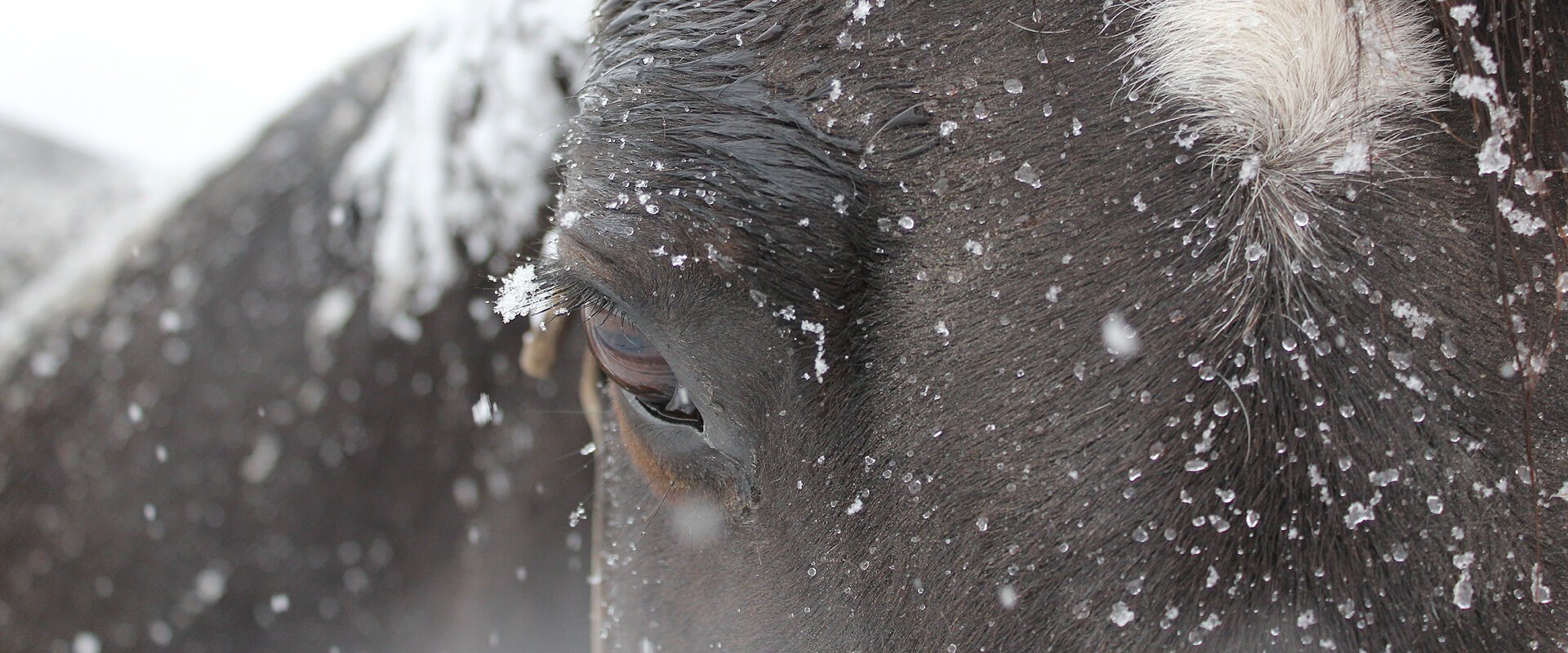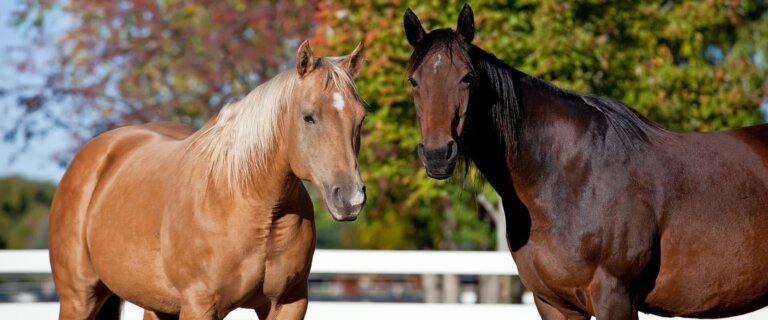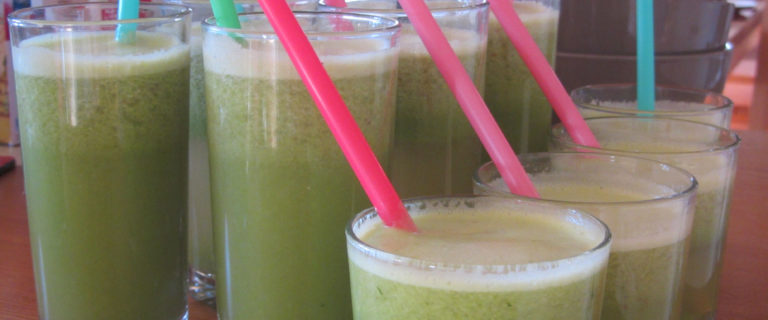A Beginners’ Guide To Winter Horse Care
Welcome to the ultimate beginners’ guide to spending winter with your horse! As the colder months approach, it’s essential to take extra care of your equine friend to guarantee their health and well-being through these challenging months. In this blog, we share our expert tips and advice on keeping your horse happy and healthy during the winter season in a beginner’s guide to winter horse care.
Nutrition & Hydration
As a new horse owner, you may be coming into your first winter with your horse. Winter brings new challenges, including reviewing nutrition and hydration. As the weather becomes colder, your horse’s diet needs reviewing. What you fed your horse in the summer may be too little as you enter the winter months. However, feeding your horse is a delicate balancing act between periods of reduced exercise caused by bad weather and giving your horse enough food to keep your horse warm and a healthy weight.
Supplements can also play a vital role in supporting your horse’s health during winter. Vitamin and mineral supplements, such as those containing vitamin E and selenium, can help boost their immune system.
Aloeride is an all-encompassing supplement that supports healthy hooves, digestion, coat and skin. Winter brings many challenges for horse owners, such as wet, muddy conditions and longer stabling hours, which can cause health issues.
Horses still need to keep hydrated during the winter, just as they do during summer. Preventing dehydration in your horse in winter is paramount. Some horses do not enjoy drinking ice-cold water, so watch how much water your horse consumes daily to see if they are drinking. A 1,100-pound horse in a cool temperature will drink 6 – 10 gallons of water a day and more if undertaking strenuous exercise. If your horse is reluctant to drink icy cold water, try warming it by adding a little hot water to bring the temperature to room temperature. Feeding adlib wet hay and encouraging your horse to consume more water by providing sloppy mash can also help with hydration.
Stable & Field Protection
You must protect your horse against harsh weather conditions, even in the field. Giving your horse protection against the cold wind and rain with a field shelter is ideal, but at the very least, some natural shelter if your horse is turned out in the field for long periods.
If your horse spends time in a stable overnight, ensure it is dry, sheltered and free from dampness, draughts and the risk of flooding. Some horse owners prefer to lay rubber matting on the floor with just a little bedding to absorb soiling. Other horse owners like to deep litter a bed in a stable, skip out nightly, and then do a complete muck out at the weekend to save time during the long, dark, cold winter months.
You can choose to do either as long as your horse has a comfortable, clean and dry base to lay down.
Remember that good ventilation is crucial, especially during winter, when your horse may be confined for longer periods. Good airflow will help prevent respiratory issues and maintain air quality within the stable. Consider using adjustable vents or windows that can be opened or closed.
Keeping Your Horse Exercised & Entertained
Unless you have the luxury of an indoor school, keeping your horse in full exercise and peak fitness can be challenging for most riders. Snow and freezing conditions can last for days or even weeks, so keeping an eye on the short lead weather forecast can help you plan how to keep your horse entertained if they are stable-bound until better weather resumes.
If you can’t exercise your horse, clearing a path so you can turn them out with hay or at least walk them in hand twice a day for a leg stretch will at least keep them active until the big thaw arrives.
Harrowing your school before a deep frost is predicted can help prevent the surface from freezing solidly, but it depends on the type of surface you have in your arena.
If your horse is confined to his stable as it is too dangerous to leave, pick out his feet at least twice a day and skip out thoroughly to help prevent thrush in his hooves. Make time to groom him thoroughly to keep his coat and skin healthy. Proper grooming is essential throughout the year, and winter is no exception. Regular grooming sessions will help keep your horse’s coat clean, healthy, and free from dirt and debris.
Brushing your horse’s coat regularly is a pleasant experience for your horse and a good bonding exercise for you both. Daily grooming stimulates blood circulation and distributes natural oils, helping to keep your horse’s skin and coat healthy. Use a curry comb to remove thick mud, a coarser dandy brush to remove dirt and finish with a soft body brush.
Trimming your horse’s mane and tail can help prevent them from becoming excessively dirty or tangled.
Keep your horse occupied in the stable with stable toys, a treat ball that dispenses treats or something as simple as carrots hidden in a haynet. There are some fantastic stable toys on the market which are worth reviewing that are ideal for periods of confined box rest.
If you have an undercover or sheltered tie-up area and your horse is sensible, you could tie up with a haynet to groom, giving your horse a change of scene and some fresh air.
To Rug Or Not
Depending on your horse’s age and lifestyle, some horse owners choose to let their horse grow a thick winter coat and leave them unrugged. Most horse owners with horses in full work will rug their horses for convenience.
While getting carried away with your rug purchases is easy, you only need a handful of good-quality rugs to see your horse through the winter months. Horseware rugs, for example, offer a clever liner change system to their rugs, so you can adapt your rug to suit the temperature without having an extensive range. The most important consideration is that your horse rug fits appropriately and does not cause any discomfort or rubbing.
Dealing With Winter Horse Health Problems
Winter can bring about various health issues in horses, but being able to identify and address them promptly can make all the difference.
Respiratory issues, such as coughing and nasal discharge, can be more common during winter due to increased dust and poor ventilation. Ensure your horse’s stable is well-ventilated and clean. Soaking hay before feeding can also help reduce dust and minimize the risk of respiratory problems.
Monitor your horse’s weight and body condition regularly. Weight loss and poor body condition can indicate underlying health issues or insufficient nutrition. Adjust their diet or seek veterinary advice if you notice any changes.
Older horses can suffer from stiff joints, and increased arthritic symptoms can be more prevalent in colder weather. Providing your horse with proper warm-up exercises, regular turnout, and appropriate bedding can help alleviate joint discomfort.
Keep an eye out for signs of colic, which can be more common during winter due to decreased water intake and limited grazing opportunities. Ensure your horse has access to clean, unfrozen water at all times and monitor their water consumption closely.
If your horse wears shoes, he will struggle being turned out in frozen or snowy conditions, where the snow and ice will ball up in his feet. Some old wives’ remedies are supposed to help prevent this, but we have never found they have worked in combination with metal shoes. However, barefoot horses generally do not have the same issues and can also wear hoof boots for ridden work.
Mud fever, mud rash and rain scold can arise from the damp, muddy conditions in the field, so keep a close eye on any minor cuts or scabs and treat them appropriately to ensure they don’t develop into anything more serious.
Enjoyed This Read? You Might Like: How to get your horse and yard winter-proofed.








